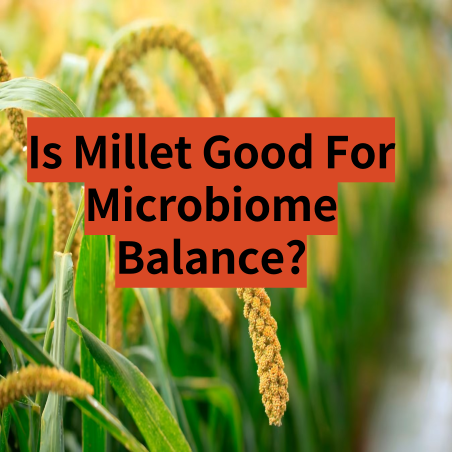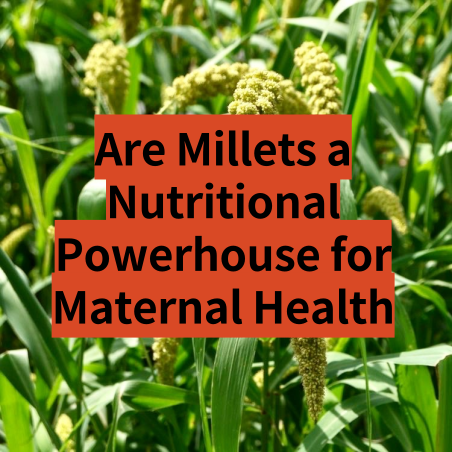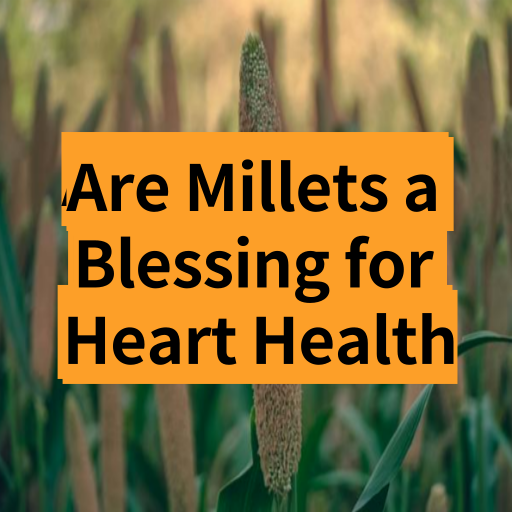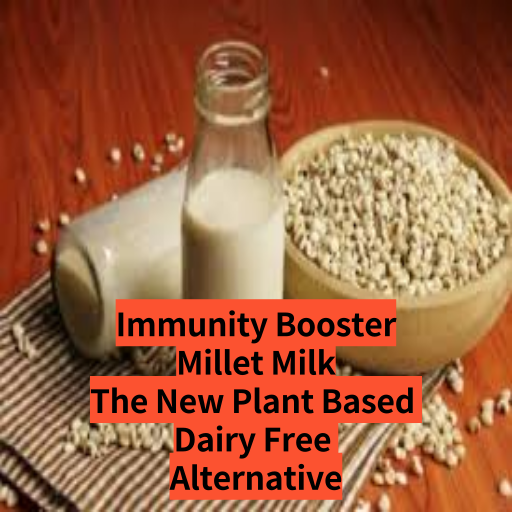Millets, often known as cereal crops, are seed grasses native to semiarid tropical regions of Asia and Africa. It was first used to feed animals, but it became a famous food grain worldwide. Millets are warm-season annual cereals that produce small grains attached to grass. Millet is a general term for a family of grains that includes several distinct species. Millets such as Jowar, Bajra, Ragi, etc., are widely consumed in India.
After a major food culture change, people just ate gluten-free products. After that pivotal change, millets finally gained the attention they deserved and became a mainstay crop for most people, alongside rice and wheat.
Overview of Millets:
Lifestyle diseases such as diabetes and obesity, and the complications they cause, have reached near-epidemic proportions in recent years. Furthermore, in some high-income countries, these diseases have surpassed all others as the leading cause of death. T
The food we consume is a major contributor to the worsening of these diseases. Most foods we eat regularly are high in salt, sugar, and fat. We are aware that these are not good for us and that seven nutrients are necessary for our bodies to function properly. Unprocessed whole grains retain all of their nutritional value.
Whole grains, however, are not limited to just these three. For instance, millets provide a wealth of beneficial nutrients due to its status as a whole grain. Unfortunately, the nutrient-dense millets have been overlooked until recently. However, for many decades, they were a staple of the diet.
Millets are great for your health since they are rich in bioactive chemicals, low in glycemic index, high in fiber, and gluten-free.
Many people still rely on millet as a main source of nutrition, making them the world’s sixth most extensively produced cereal grain. These whole grains provide an excellent edge in the battle against nutritional deficiencies in developing countries due to their high nutritious content.
Millet types
Millets are a grain that may be grown with less farmland and fertile water. Also, they cost very little. They are sometimes called “poor man’s food grain.” Millets, on the other hand, are rising in popularity across the globe due to their enormous potential and many health benefits.
Over a billion people in the world’s driest and second-driest areas rely on the over 6,000 types of millet as their primary source of calories and protein. Since they don’t need as much work to grow as our overcultivated wheat, rice, and maize, they are increasing in popularity.
Naked Grains:
The term “naked grains” refers to millets that do not have a tough husk. Ragi, Jowar, and Bajra are only a few examples of this type of millet. As they may be eaten directly after harvesting, these grains are among the most widely grown types.
Husked Grains:
This category includes the Fox millet, the Little millet, and the Kodo millet. They have a seed coat that cannot be digested. The seed coat should be removed before ingestion. The mechanical method is often used for the processing of rice.
Varieties of Millets:
A list of the 10 most common millets is given below.
1. Sorghum Millet
Throughout India, sorghum is known as Jowar and is used for baking bread like rotis and parathas. Besides its many other health benefits, the policosanols found in organic jowar have been shown to reduce cholesterol levels. People who have a wheat sensitivity should try it.
2. Finger Millet
Reddish in color, finger millet is more often referred to as ragi in India. It’s a great alternative to grains like rice and wheat since it’s packed with protein and amino acids. Cookies and halwa may be made using ragi. It’s safe for kids with gluten allergies and great for their brain growth as they grow.
3. Foxtail Millet
Blood sugar and heart patients may benefit from eating foxtail millet since it contains carbs that help regulate blood sugar levels. It comes in semolina and rice flour. It is also called kakum or kangni. It is high in iron and calcium and is thought to boost the immune system.
4. Pearl Millet
Pearl millet, also known as Bajra, is one of the most widely consumed millets in the world. Health advantages abound in the many formats it may be cooked in, such as roti and khichdi. Minerals, including calcium and magnesium, are found in bajra, iron, protein, and fiber. Therefore, it is essential to include it in your diet regularly to maintain a healthy balance.
5. Barnyard Millet
In addition to sorghum, another millet with a high fiber content is Sanwa, often known as a barnyard. Adding it to your diet may do wonders for your health if you are trying to reduce weight. Calcium and phosphorus are abundant in Sanwa, which aids in bone development.
6. Proso/Broomcorn Millet
Because of its low glycemic index, proso/broomcorn millet may help maintain healthy blood sugar levels. In India, it is often referred to as Chena and utilized as a bird food.
7. Little Millet
Moraiyo, Kutki, Shavan, and Sama are just a few of the many names for little millet. It contains B vitamins and minerals, including calcium, iron, zinc, and potassium. It’s a common rice alternative in South Indian cuisine and is utilized in various regional specialties.
8. Amaranth Millet
Amaranth, also known as Rajgira, Ramdana, and Chola, is one kind of millet that is less well-known than others. Protein-rich and effective against hair loss and graying, this millet is a great choice. Cholesterol and heart disease risk are two more things amaranth helps with. It is rich in minerals, calcium, and antioxidants.
9. Buckwheat Millet
During the fasting time of Navratras, buckwheat is often consumed since it is one of the most popular forms of millets in India. Kuttu, or something similar, is good for those with diabetes and may reduce blood pressure. It helps maintain healthy blood pressure and cholesterol levels and may aid in weight loss. In addition to helping to prevent breast cancer, buckwheat also eases asthma symptoms in children and prevents gallstones. It is often pounded into a fine powder to produce bread, puris, and cheelas.
10. Kodu Millet
Kodu millet, also known as Kodon, is highly digestible and has a high lecithin content. It’s essential for keeping your neurological system in good shape. Niacin, B6, and folic acid are three B vitamins that Kodu is particularly rich in. It includes calcium, iron, potassium, magnesium, and zinc, among other minerals. Kodu is a great option for those with gluten intolerance since it does not contain gluten. Consistent use may reduce the risk factors for cardiovascular disease, including hypertension and cholesterol, in postmenopausal women.
Conclusion:
We examined millets, their common names, and why you should eat them. Organic millets are nutrient-dense and gluten-free grains. Fiber, vitamins, and minerals like magnesium, phosphorus, calcium, zinc, iron, and potassium may all be abundant in these foods. Millets come in various flavors and textures, each with it’s health benefits. Idlis, khichdi, halwa, and biscuits are just a few of the many popular cuisines throughout India that use organic millet, like ragi, jowar, and bajra. Choose organic millets to include in your diet since they benefit your health and the environment.
FAQs:
1. Can several kinds of millet be combined and eaten together?
In this case, if purchasing many millets and paddy kinds of rice, keeping them in a single container, and utilizing that rather than each individually makes life and the shift to healthy eating simpler, you can do so. Mixed is preferable to the daily consumption of bleached paddy rice.
2. What kind of millet is best for the digestive system?
Foxtail millet is a great weight loss meal since it is full of complex carbs and a healthy diet. Foxtail millet has several health benefits, including lowering cholesterol, aiding digestion, and protecting the cardiovascular system.
3. Which millet is recommended for diabetics?
Pearl millet is a grain that improves insulin sensitivity and reduces triglyceride levels. Furthermore, the high fiber content is beneficial in controlling diabetes. It’s absorbed gradually, so it doesn’t boost blood sugar levels like other meals.
4. Which millet is a good source of vitamin D?
There is a lot of fiber quantity in foxtail millet. Bone health is essential to your overall health, and Foxtail Millet has a high concentration of Calcium. It is an excellent source of vitamin D as well













